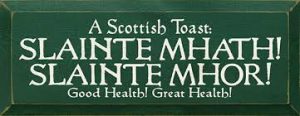We’re now well into the 25 Days of Giving Series and it’s my intent to provide different aspects and strategies of charitable giving. Given that it’s the season of joy, sharing, and love it’s a great time to be thinking about smart giving (the kind that doesn’t involve gift wrappings, stockings, or bows). Read on to learn how the charitable remainder trust could be a valuable giving tool.
Charitable Remainder Trust, defined
A charitable remainder trust (CRT) is a split interest trust that pays out income to one or more non-charitable beneficiaries for life (or lives) or a term of years not to exceed twenty. The selected payout rate may not be less than 5%, and no more than 50%, of fair market value (FMV) of assets originally placed in trust. At the end of the trust term, the remaining trust assets (the remainder interest) is distributed to charity selected by the donor; the actuarial value of the charity’s remainder interest must be at least 10% at the time of the trust’s creation.
Benefits of a CRT
- Note that a useful attribute of a CRT is flexibility. Although Donor’s transfer of property to the trust is irrevocable, a CRT provides for Donor the right to change charitable beneficiaries.
- Note also the tax benefits of a CRT. Donor may receive a federal income tax charitable deduction for the value of the remainder interest in the year of the transfer, Donor may transfer assets without recognition of capital gain tax, and there is no estate tax on the property passing to Charity.
Two forms: CRAT and CRUT
CRTs take one of two forms: a charitable remainder annuity trust (CRAT) or a charitable remainder unitrust (CRUT). There are important differences:
A CRAT pays an annuity to the income beneficiary at a selected payout rate that is a percentage of the assets valued at the time of the trust creation. Additional contributions to the trust are not permitted.
A CRUT pays a percentage of the annual value of the trust assets, a unitrust amount, to the income beneficiary. Additional contributions to the trust are permitted.
Variations of CRUTs
Several variations of the CRUT are permitted under the Internal Revenue Code:
- A Net-Income CRUT (NICRUT) permits the trustee to distribute an annual payment that is the lesser of the specified percentage of value in that year, or the net income actually earned by the trust in that year.
- A NIMCRUT is a CRUT with a net-income limitation subject to a make-up provision. Like a NICRUT, the terms of a NIMCRUT direct the Trustee to pay the lesser of the specified percentage of the value of the trust assets in that year or the net income actually earned by the trust in that year. However, if the payout is less than the specified percentage is paid out in one or more years, the accumulated “income deficits” will be made up in a subsequent year from the excess income above what is the specified percentage of the value of the trust assets in that year.
- A Flip CRUT permits the trust to begin its existence as a NICRUT or NIMCRUT, then “flip” into a standard CRUT on the occurrence of a specific triggering event, as provided in the trust document. The flip option is attractive when Donor wishes to donate to the CRUT illiquid or hard-to-market assets, such as real estate or closely held stock.

Knowing if the CRT is a best choice for your charitable giving can be difficult, so I advise speaking with your trusted professional advisors to evaluate your situation. This concept can be confusing, so don’t hesitate to reach out for more information and explore how a charitable remainder trust could be beneficial to you. Feel free to contact me at any time at Gordon@gordonfischerlawfirm.com or by phone at 515-371-6077.




